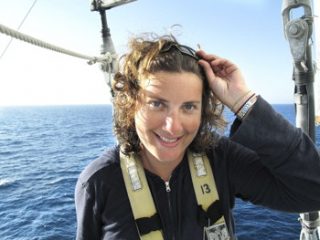Have you ever set sail on a Luck Dragon?
My name is Randi Rotjan and this is my second time aboard the R/V Falkor, named for said Luck Dragon, but this time the word “luck” has so much more meaning. My team and I are fortunate to be here, given the state of the world. Putting together an expedition is always a massive ordeal, but planning one in a pandemic is next-level. After 10 months of intensive organizing following years of proposal writing and analysis and publication after our first expedition in 2017, it is truly incredible to be on the ship. Our gear and team in place, and we’re finally headed to sea towards the equatorial Pacific. After a year of fear, it feels incredibly free to look forward to a month of adventure. How lucky we are, indeed! We are going to the equatorial Pacific towards unexplored seamounts and uninhabited islands.
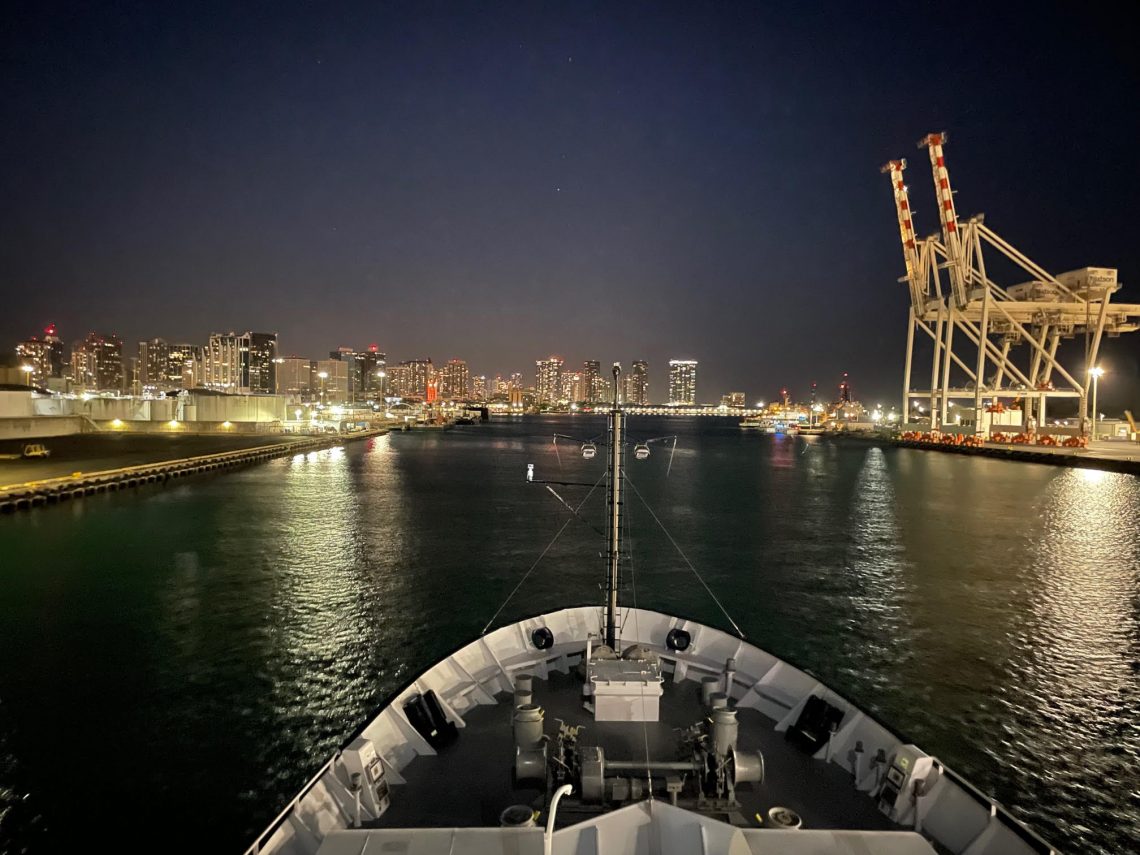
Specifically, we are headed to two marine protected areas (MPAs) – one on either side of the equator. North of the Equator is the Howland and Baker unit of the Pacific Remote Islands Marine National Monument (PRIMNM) in US waters. The south of the Equator is the Phoenix Islands Protected Area (PIPA) Kiribati waters. Interestingly, these two MPAs are actually within the same archipelago, the Phoenix Archipelago, a group of 10 islands surrounded by open ocean, abyssal plains, and many submerged seamounts, including an underwater mountain chain called the Tokelau Ridge. On our way to and from these MPAs, we will be diving some never-before-seen seamounts in the high seas, also known as international waters or Areas Beyond National Jurisdiction (ABNJ). Of the approximately 18,000 seamounts found in ABNJs, very few have been explored. There is much discussion around potential conservation strategies for ABNJ seamounts, especially in the context of 30×30; the goal to have protected 30% of the oceans by 2030.
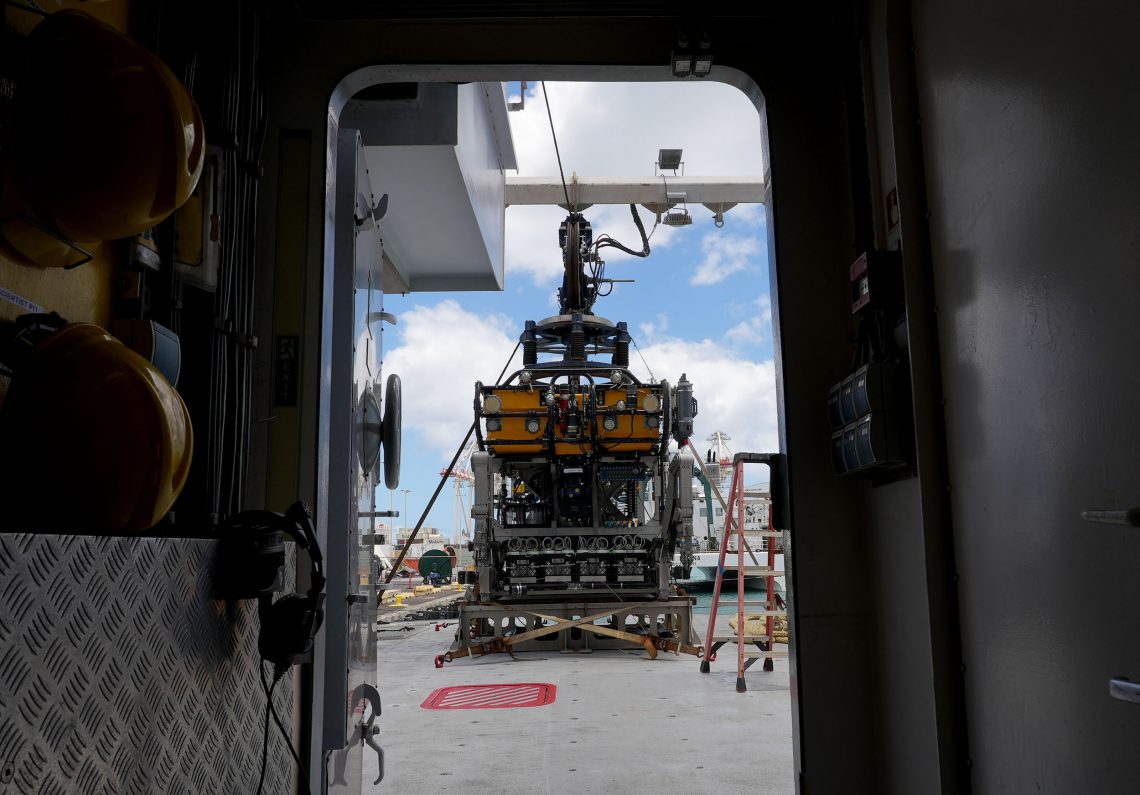
We will map, explore, document, and sample deep sea coral ecosystems at all of these sites, protected or not. We have an intense science agenda with many different objectives, ranging from characterizing the corals and sponges across both sides of the equator to looking at the changes in coral metabolic rate as a proxy for immune response. We are excited about our scientific goals and will certainly share more as the dives unfold.
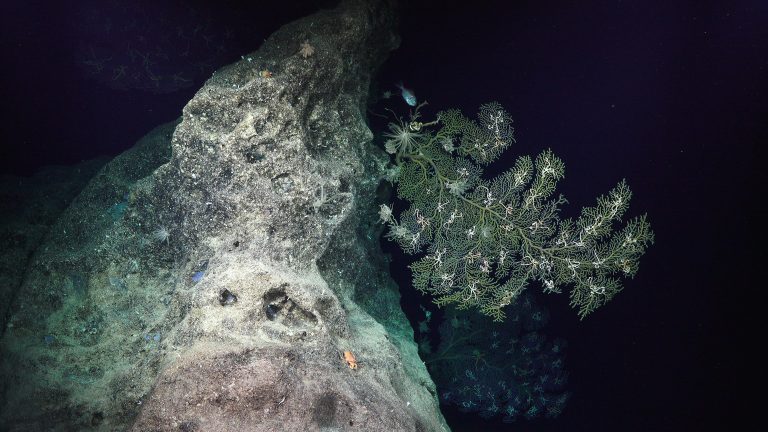
But for now, as we start this epic 34-day journey onboard, I want to reflect on what it took to get to this point. Yes, we are lucky to be here, and yes, I’m grateful for all of the “good luck” wishes we’ve been given. But the truth of it is that – as the old saying goes – luck favors the prepared. We are here because of a ton of preparation, effort, sweat, determination, and yes – also some good luck.
I asked around the crew and company tonight to see what the word “luck” means to us all. I heard phrases like “providential and fortunate,” “right place at the right time,” “make your own luck,” and “preparation and timing.” But I also was given the list of lucky charms: shamrocks, 4-leaf clovers, rabbit feet, horseshoes, the number seven – fair enough, given that there are many superstitions in sailing.
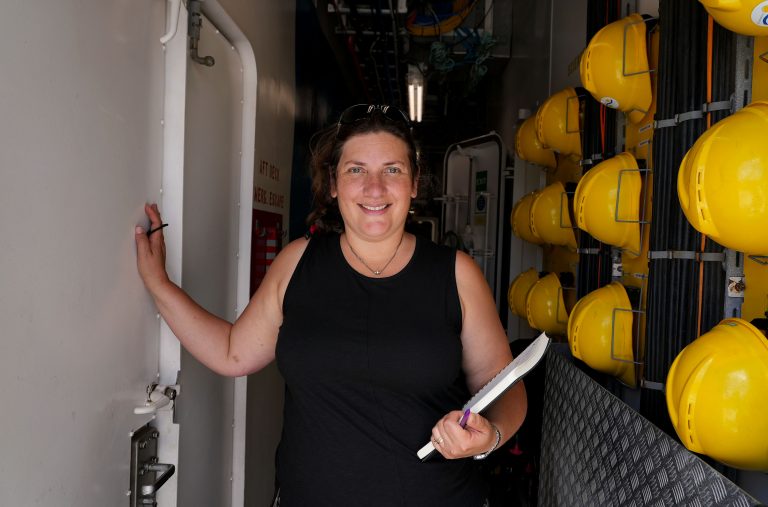
Reflecting on the sum of all of these answers, I realized that I’m still thinking about luck because we require some. One of our target locations still has closed borders due to COVID, and we are hoping for a global wish of good luck to get us where we all very much want to go. But regardless of our itinerary, we have an exciting set of scientific questions, a truly wonderful science team, and the best crew in the world. So how will this expedition turn out? Where will we go? What will we find? The adventure starts now, and we’re all excited to find out. What I can say is that I am grateful to all of the many, many people who helped to get us to this point. And as for the journey, well, please wish us luck!
